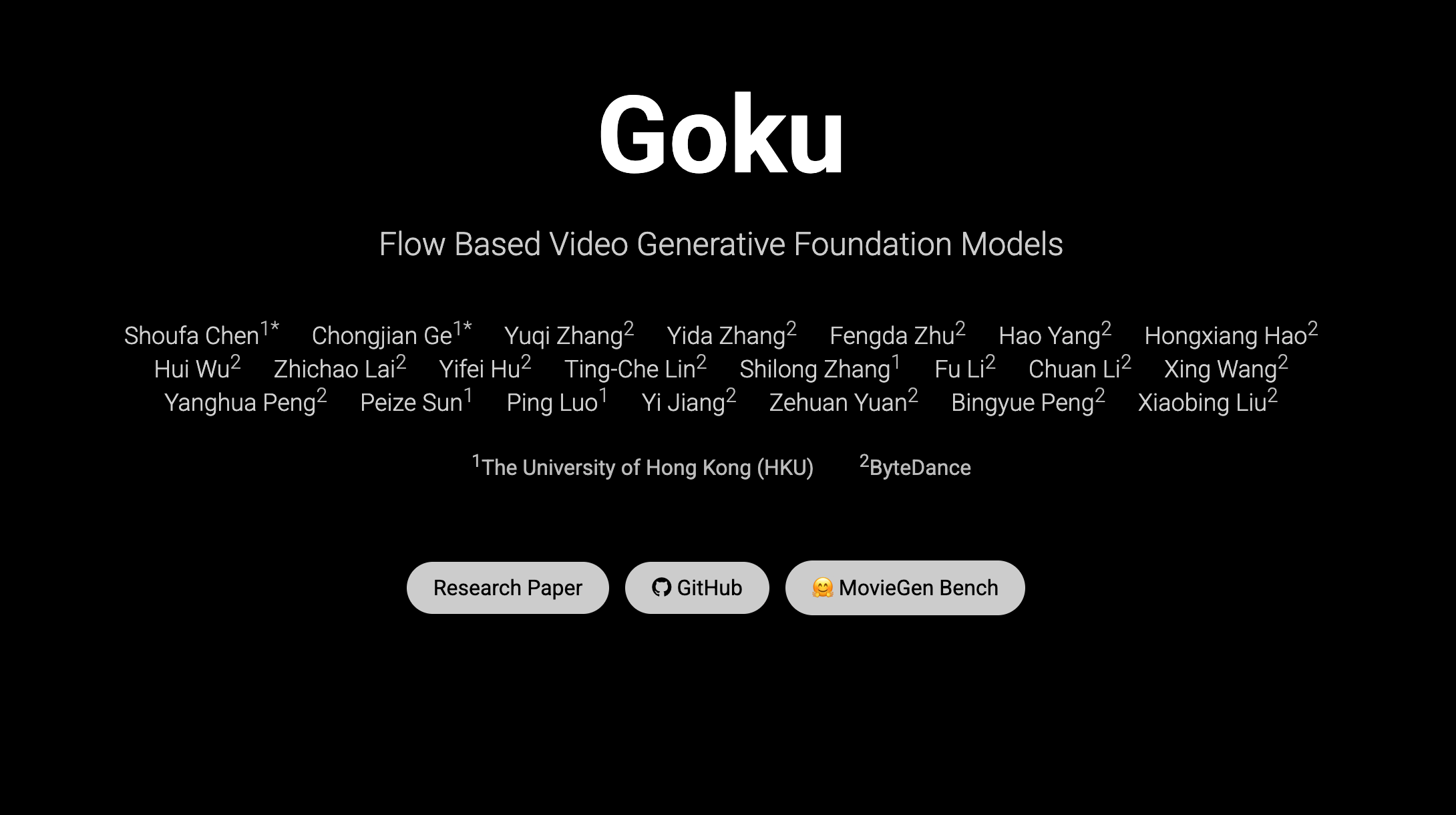Goku AI: Advanced Image and Video Generation

Introduction
ByteDance's X-Portrait, released in November 2024, represents a groundbreaking advancement in AI-driven portrait animation.
X-Portrait enables hyper-realistic facial expression transfer from videos to static images. This system combines advanced expression encoding with diffusion models to create fluid animations that preserve emotional nuance and identity, raising both creative possibilities and ethical questions about digital authenticity.
What is Goku AI?
Goku AI is a family of flow-based video generative foundation models developed by ByteDance. It uses rectified flow Transformers to generate high-quality images and videos with advanced text-to-video, image-to-video, and text-to-image capabilities.
Goku outperforms many existing models in visual generation benchmarks and is open-source for research and development.
Key Features of Goku AI
- Flow-Based Generative Model – Uses rectified flow Transformers for superior image and video synthesis.
- Multi-Modal Generation – Supports text-to-video, image-to-video, and text-to-image generation.
- High-Quality Outputs – Delivers sharp, detailed visuals with smooth motion coherence in videos.
- Advanced Data Curation – Use a refined dataset filtering and captioning pipeline for better training.
- Benchmark Performance – Outperforms models like DALL-E 3 and PixelDance on multiple AI evaluation metrics.
- Scalable Model Architecture – Offers configurations ranging from 2B to 8B parameters for flexibility in performance and efficiency.
Model Architecture and Training Process
Goku's architecture is built upon a Transformer framework, encompassing 2 to 8 billion parameters. It incorporates a 3D joint image-video variational autoencoder (VAE), which compresses visual inputs into a shared latent space.
This shared representation enables the model to handle both images and videos effectively. The training process is structured into multiple stages:
1. Text-to-Image Pretraining
Goku learns to associate textual descriptions with corresponding images, refining its ability to interpret and synthesize visual elements from text prompts.
2. Joint Image and Video Learning
The model expands to incorporate both image and video data, enhancing its understanding of temporal coherence and motion dynamics, crucial for realistic video generation.
3. Modality-Specific Fine-Tuning
Goku undergoes fine-tuning tailored to each specific modality. For image generation, adjustments focus on enhancing visual details, while for video generation, the emphasis is on improving temporal smoothness and motion continuity.
Data Curation
To ensure high-quality outputs, ByteDance implemented a meticulous data curation pipeline, encompassing:
- Collection: Gathering extensive image and video datasets from diverse sources.
- Filtering: Applying aesthetic models to evaluate and retain visually appealing and contextually relevant clips.
- Captioning: Utilizing multimodal large language models to generate dense and contextually aligned captions, enhancing the model's understanding during training.
Performance Benchmarks
Goku has been rigorously tested against various AI models and has outperformed many of them in key benchmarks:
Text-to-Image (T2I) Benchmarks
- GenEval (Text-to-Image alignment): Goku-T2I scored 0.76, surpassing DALL-E 3's 0.67.
- T2I-CompBench (Compositional understanding): Goku-T2I achieved 0.75, while DALL-E 3 scored 0.81.
- DPG-Bench (Detailed prompt following): Goku-T2I scored 83.65, slightly outperforming DALL-E 3's 83.50.
Text-to-Video (T2V) Benchmarks
- UCF-101 (Zero-shot video synthesis): Goku-T2V achieved 217.24 FVD (lower is better), outperforming PixelDance's 242.82 FVD.
- VBench (Overall Performance): Goku-T2V scored 84.85, surpassing CausVid's 84.27.
Demonstrations and Accessibility
To showcase Goku's capabilities, ByteDance has presented a collection of video generation demos on MovieGenBench. These demonstrations provide insights into the model's proficiency in text-to-video generation, offering a glimpse into the future of AI-driven content creation.
For those interested in exploring Goku further, additional resources and information are available on its official website and GitHub repository.
Goku AI Example Videos
This close-up shot of a chameleon showcases its striking color changing capabilities. The background is blurred, drawing attention to the animal’s striking appearance.
A handheld shot chasing after a group of friends laughing and playing on the beach at sunset.
A woman wearing blue jeans and a white t-shirt taking a pleasant stroll in Mumbai, India during a beautiful sunset.
In a realistic close-up shot with smooth camera movement, a charming woman is seen outdoors on a grassy lawn. She is wearing a white shirt paired with a white jacket, and she adorns a necklace and earrings, adding elegance to her appearance. The woman is gracefully walking around an area enclosed by a wooden fence, moving in a gentle arc as she walks past the fence. The background features a lush green lawn and tent-like structures, creating a serene and refreshing atmosphere. The lighting is ample, highlighting the natural beauty of the scene.
Related ByteDance AI Tools
Conclusion
In summary, ByteDance's Goku represents a significant advancement in the field of generative AI, offering versatile and high-performance solutions for image and video generation tasks.